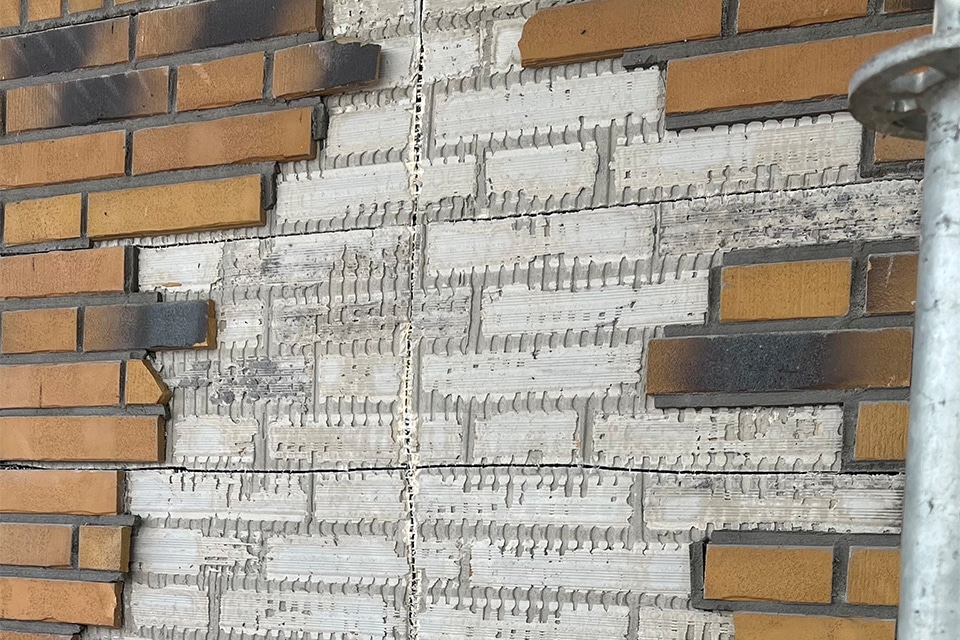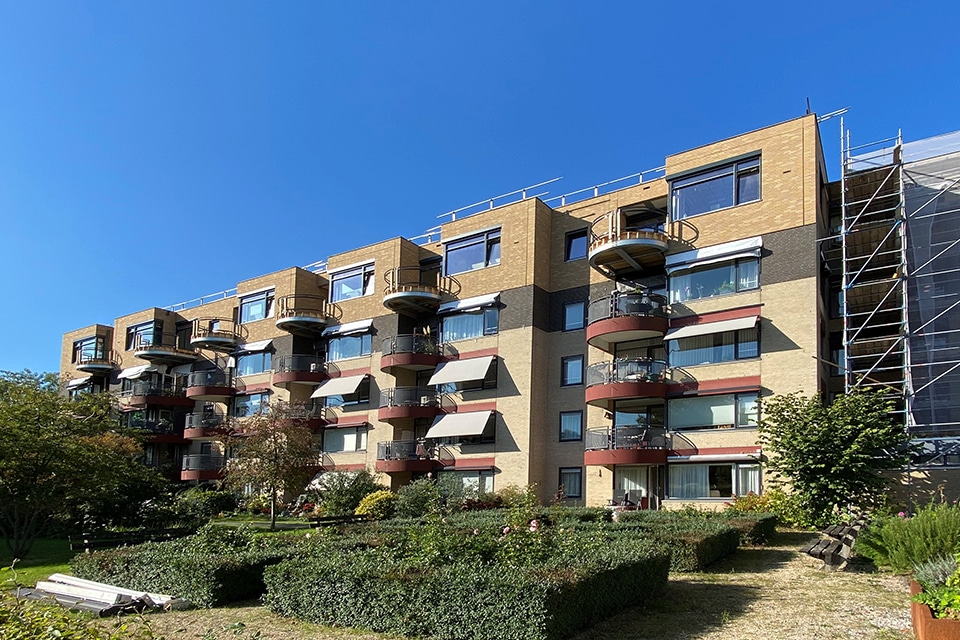
Stone strips under the spotlight
INVEST IN QUALITY
If there is a fire that may involve solar panels, it usually makes headlines. The same goes for stone strips falling off a facade. The result is a search for the cause and a culprit, and there is a chance that an entire industry will be targeted. Fires with a link to solar panels mean buildings are sometimes no longer insurable for fire. With stone strips, it's the processors or the systems that "don't suck. And that can hurt the companies doing their best for the client.
So did Marc Veenstra, owner of IBS Afbouw in Winkel (NH). "We have now been in the market for five years applying ceramic and mineral stone strips, as well as decorative plaster. In doing so, we use the best materials from one supplier and our own qualified people. However, there are companies that sell the work far below our price. They charge on average 35% less for processing system with mineral strips per square meter all-in and use unqualified, often cheaper and usually foreign workers to do so. As a result, they still earn well from it, but the result is often communication problems, no understanding of processing instructions, no attachment to the product and thus problems with the end result. When stone strips fall off the facade in Groningen, they are bothered as far away as Limburg. That makes me very sad in my heart and I am very concerned about what is happening in the industry."
Well processed, beautiful product
Mineral stone strips emerged in the Netherlands some twenty years ago. Veenstra: "It is a beautiful product with all kinds of advantages, especially as a light facade solution with insulation for renovations and new buildings. The important thing is that it is processed professionally and according to the supplier's instructions. That means always using scaffolding that is protected against all kinds of weather conditions, processing the panels using edge gluing and dots and always gluing the stone strips butter-float (applied on both sides). But there are also many colleague companies, as I will continue to call them, who do not comply with these regulations. This is because they save time and money, for example by allowing dry work during rain. The quick profit is for that company, the damages that result are for the entire industry and for the customer."

Problems
Veenstra has to use his people afterwards to fix the mistakes. "Then again, when I arrive somewhere, I can get really well pissed off. We, as a KOMO-certified company, have to comply with everything while another company hires the first the best and can deploy on a job, resulting in poorly adhering work and leaks. Where things don't go well? Sometimes it is the client who is not willing to pay for quality, elsewhere a contractor who has bought as low as possible or the subcontractor who does half a job. The result is the same and I can't stand that. Certificates don't work adequately either. I doubt that all certifying bodies work independently. And what use is it if we are mainly driven to expense by all kinds of requirements, while the first self-employed person can stick insulation and stone strips? I'd rather do top-notch work myself and visit my old projects every year. And if there is something wrong then, I solve it myself."
Training
Still, Veenstra is not giving up. "Quitting? No! I want to keep pulling that cart and provide the customer with the best facade solutions using the best materials. The best thing would be if all processors in the industry received training and became certified for the complete package. To suppliers I say: know who you are selling to, drive by the projects and make sure your products are processed according to regulations. Don't give high discounts but invest in quality."




